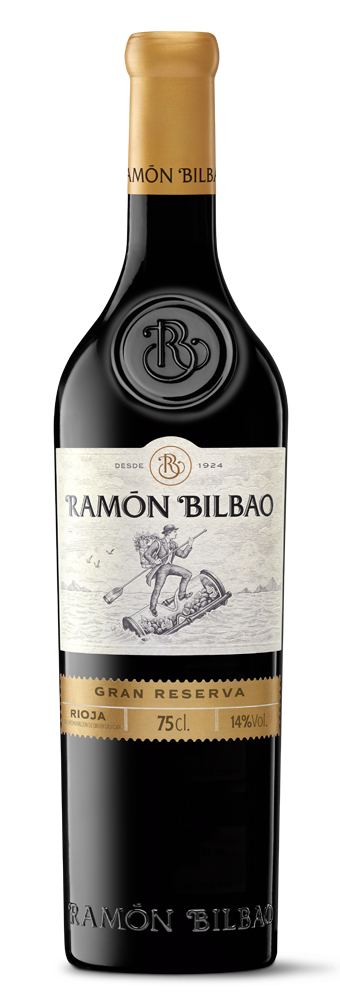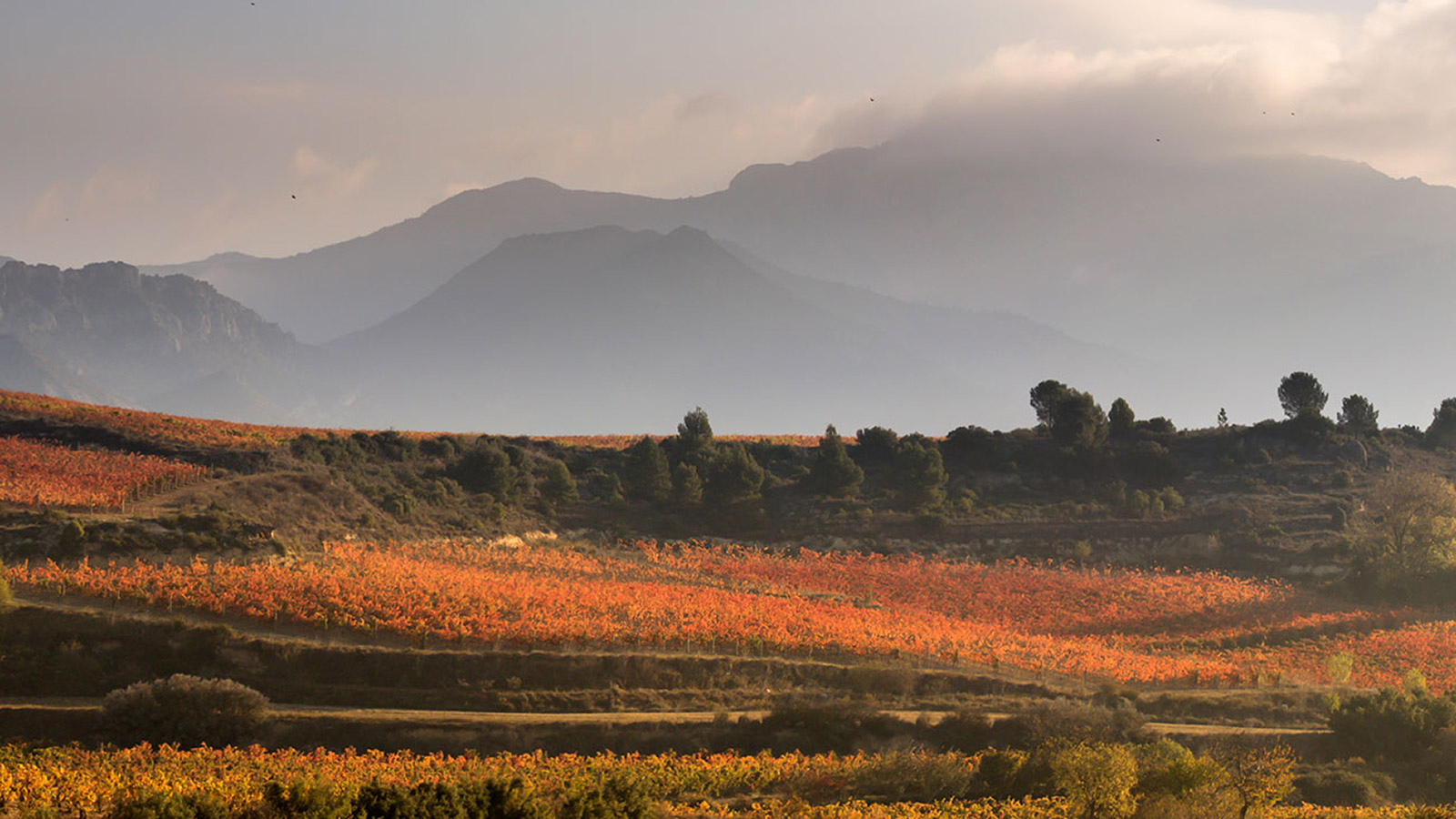
Ramón Bilbao Gran Reserva
Somos los dueños de nuestros actos. Los capitanes de nuestro barco, y tan solo nosotros sabremos qué horizontes vislumbrar, qué destino tocar con las manos.



In partnership with Decanter
There are several elements that define the geography of a country: topography, altitude, water and air currents, climate and soils. In Spain, the varied characteristics of those different elements help to explain how unique and diverse the country is when it comes to producing wine. Let’s look at some of the factors.
Mountains mark the borders of climates and peoples. They slow the course of winds and rains, as well as making trade more difficult. Most European countries have mountains at their edges. In contrast, most of Spain’s are inside the country, fracturing it into a wide array of different cultures, climates and, therefore, vineyards.
Most of Catalonia is made up of hills, which determine Montsant, Penedès and other appellations; the best vineyards in the Levante are not on the coast, but in the mountains, as in Alicante or Utiel-Requena. Bierzo is separated from Castilla y León by mountains. If I had to define Spain with one word, it would be diversity. At the origin, this has nothing to do with culture, but with mountains.
Many mountains are close to the coast, but rarely do Spanish mountains descend steeply, like the Alps or the Apennines for example. They stop at mid-course, in the huge high-altitude Castilian plateaux. Toro and Ribera del Duero are wines from the northern plateau; while Manchuela and Uclés come from the south. Spain’s average altitude is second only to Switzerland and Austria; its relatively low latitude is compensated by high altitude.
Spain consists of part of a peninsula plus two archipelagos and has more than 7,000km of coastline. Water is great to buffer heat. Some Spanish wines are the image of their sea: think saline Txakoli from the Basque Country or ‘vino rancio’ Fondillón from Alicante. The immense climatic power of the sea reaches very far. Only great distances, high mountains or a conflicting influence of another sea can dwindle the effect of an ocean on the climate.
Spain lies between two seas, which could not be more different. A brave and fresh ocean, the Atlantic; contrasted with a clear, warm and enclosed sea, the Mediterranean. The Atlantic Ocean is a rain carrier and temperate because of the Gulf Stream. It marks the climate in the Canaries, Spain’s North Peninsula coast and Galicia, but its clouds get stuck in the Cantabrian mountains.
The Mediterranean Sea does not bring much rain, but a long dry summer, ideal for tourists but hard for agriculture. The Mediterranean influence can be felt far inside the Spanish Peninsula, because its air travels through the most important river valley in Spain: the Ebro. The Ebro valley is Garnacha’s cradle: Cariñena, Campo de Borja, Navarra.

I did not know what a great river was until I travelled outside Spain. Most Spanish rivers can’t be navigated; they are useless for trade. Small rivers and high mountains are a natural recipe for commercial disaster. Because of that, the most classic Spanish wines were produced nearby seaports: Jerez, Canary, Alicante, Málaga. They could then be easily traded elsewhere in the world.
The amazing wines made in the Spanish interior only rose to fame in the late 19th century thanks to new modes of transport, such as the train. The terroir has always been there, but the means to bring the wines to the mouths of affluent people were lacking. Even today we are still discovering wines from traditionally isolated areas, such as Arribes del Duero, Salamanca and Ribeira Sacra.
Water is not only liquid. It is in the air, as humidity or as clouds, moving with the wind. Humid winds bring rain; dry winds extract water from the soil and plants. Plants trap some of the water steam to meet their needs. Rains and relative humidity in the atmosphere are crucial elements of the climate, which vary greatly in Spain.
Some quality regions, such as Rías Baixas, receive plenty of water, but most of Spain is dry to very dry. Lack of water is the most pressing problem for winemakers. Only very old bush vines will thrive in such dry conditions; Jumilla is the flagship wine from the desert.
Spain offers an enormous diversity of soils and bedrocks. It would be impractical to list them all in a generic article such as this. Let’s be content to say that in Spain there is everything: limestone, granite, schist, lava, basalt, sand and lots of clay.
Some soils determine the character of wines, but the soil alone is meaningless to the wine-grower. It is the relationship between soil, life and climate, the ecosystem that develops in the soil and the air, that generates the grapes. Soil is a factor of extraordinary importance for grading qualities in fine wine areas, but they are less relevant than geographical, historical and climatic conditions for determining the potential of a whole wine region.
Water, earth, air and fire are the four elements of nature. In my opinion, we should also add a fifth element: light. It is energy, but not heat. The changing combinations of these elements will determine the climate in any wine region. Rivers and seas are the water; soils, bedrocks and topography are the earth; winds and atmosphere the air; the combination of latitude and altitude dictate heat, the fire. The latitude, and the action of the other four elements, define the available light.
There are four major climatic zones, several hundred mesoclimates (zonal climates) and a myriad of microclimates (vineyard climates). The four climates are:
The white wines from Ribeiro are a good example, while Bierzo is the Atlantic flagship for red wines.
Wines to try:
Alvaro Palacios, Villa de Corullón, Bierzo 2016
Astobiza, Malkoa, Txakoli de Alava 2015
Manuel Formigo, Cholo X Aniversario, Ribeiro 2015
This is the land of Cigales or Rueda in the fresher north, and also of Valdepeñas in the drier south, as well as the Garnacha from Gredos in the mountains between the two Castilian plateaux.

Wines to try:
Bodegas Frontonio, Las Alas de Frontonio Garnacha, Valdejalón 2016
Cruz de Alba, Finca los Hoyales, Ribera del Duero 2015
Menade, Sobrenatural, Rueda 2015
Peninsula Vinicultores, Vino de Montana, Sierras de Gata y Gredos 2017
Priorat is the epitome of Catalonian Mediterranean; Binissalem in Majorca, and the great Bobal wines from Valencia give a softer touch. Meanwhile the best Monastrell wines from Yecla show old-vine nobility in the warmest areas.
Wines to try:
Bodegas Bentomiz, Ariyanas Seco Sobre Lías Finas, Málaga 2017
Grandes Vinos, Anayón Cariñena Terracota, Cariñena 2014
Mas Doix 1902, Priorat 2015
Each island in the archipelago, and each part of each island, give wines of a different character. Try wines from Lanzarote, La Palma and Orotava Valley in Tenerife to see this diversity in action: they have nothing in common except their the volcanic nature.
As well as these distinct areas, there are also wine regions in Spain that are shaped by several different climatic conditions coming together. One of the many things that make Rioja unique is that it lies just in the confluence of Atlantic, Mediterranean and continental climates. While Jerez sits at the point where the Mediterranean gets together with the Atlantic, on the small southern tip of Spain. Amazing, isn’t it?

Wines to try:
Almacenista Manuel Cuevas Jurado de Lustau, Manzanilla Pasada de Sanlúcar, Jerez
Ramón Bilbao, Gran Reserva, Rioja 2011